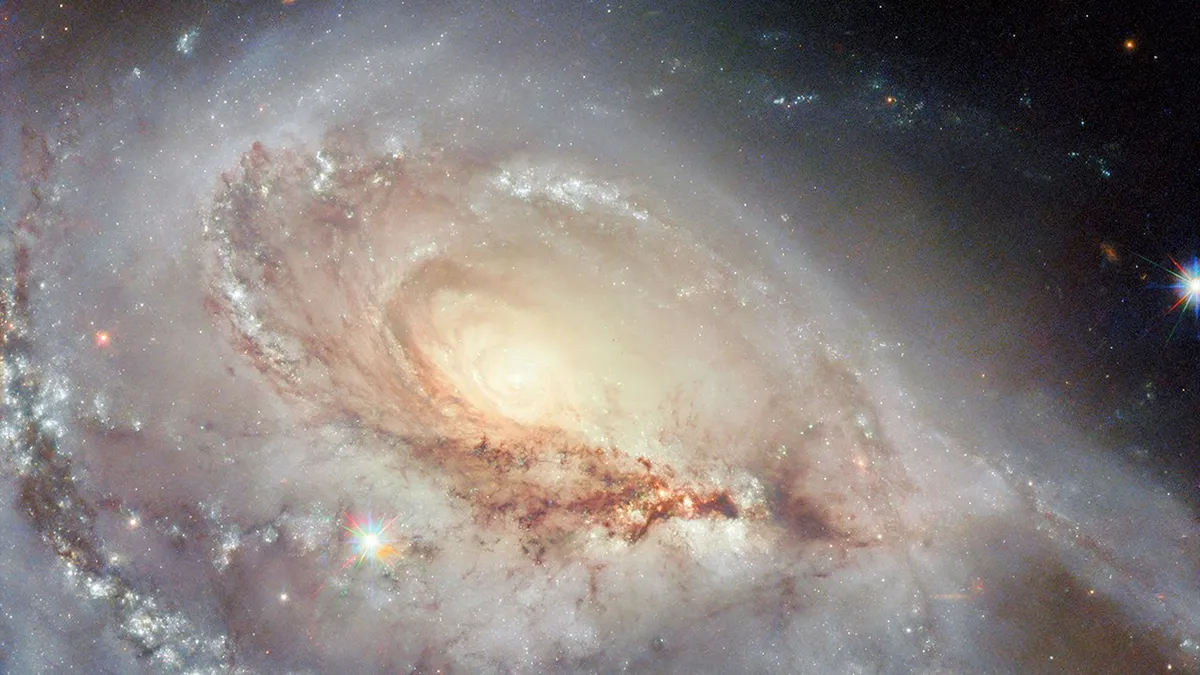
Arp 184, also known as NGC 1961, is a captivating example of a skewed or peculiar spiral galaxy. This breathtaking image captured by the Hubble Space Telescope reveals the galaxy's unique structure and beauty. As one of the 338 formations cataloged by astronomer Halton Arp in 1966, Arp 184 has intrigued astronomers and space enthusiasts alike.
Arp 184 stands out due to its distinct broad, star-speckled spiral arm that appears to stretch towards Earth, giving it a peculiar yet spectacular appearance. Interestingly, the galaxy's far side contains only a few wisps of gas and stars, contrasting sharply with its prominent spiral arm. This unique configuration is a defining feature that led to its inclusion in Arp's Atlas of Peculiar Galaxies.
This remarkable galaxy is situated approximately 190 million light-years away from Earth, nestled within the constellation Camelopardalis, also known as The Giraffe. Its distance and location make it a fascinating subject for astronomical studies and observations.
The stunning image of Arp 184 is the result of three Snapshot observing programs conducted by the Hubble Space Telescope. These programs are designed to capture brief observations during time gaps between the longer studies of the observatory. Notably, one of these programs specifically focused on galaxies listed in both the Atlas of Peculiar Galaxies and the A Catalogue of Southern Peculiar Galaxies and Associations, which was compiled by Halton Arp and Barry Madore.
In addition to its peculiar structure, Arp 184 has hosted four known supernovae over the past three decades. The remaining two Snapshot programs investigated the aftermath of these fleeting astronomical events, providing further insight into the galaxy's dynamic nature and its role in the universe.
If you're fascinated by the wonders of the universe, exploring Arp 184 offers a glimpse into the captivating world of peculiar galaxies. Stay tuned for more astronomical discoveries and insights from the Hubble Space Telescope as we continue to unravel the mysteries of our cosmos.